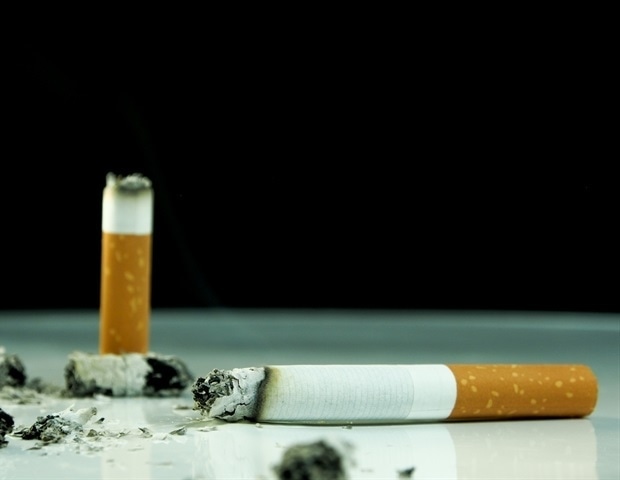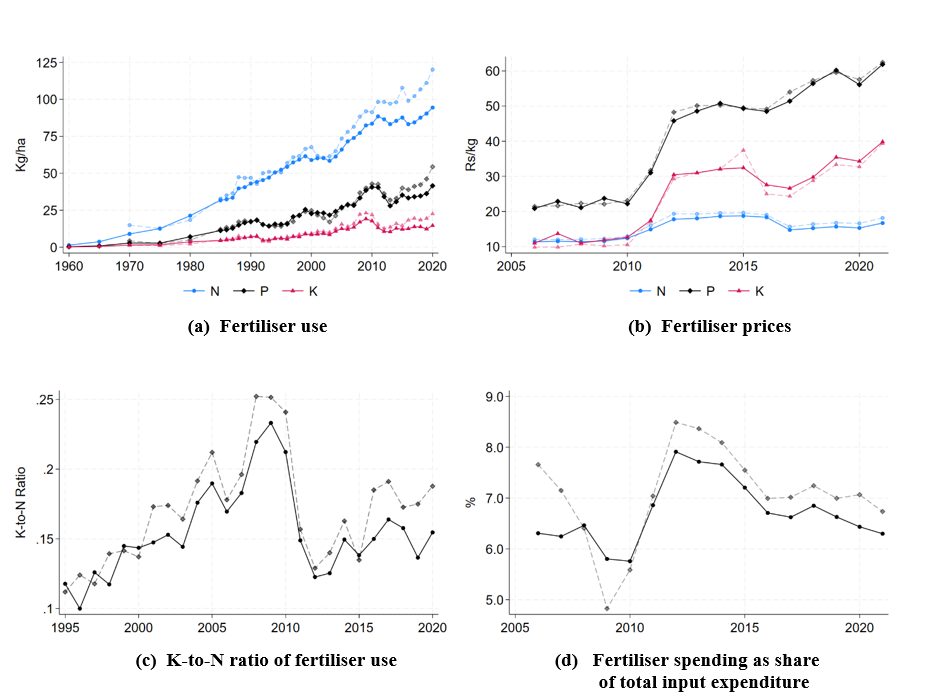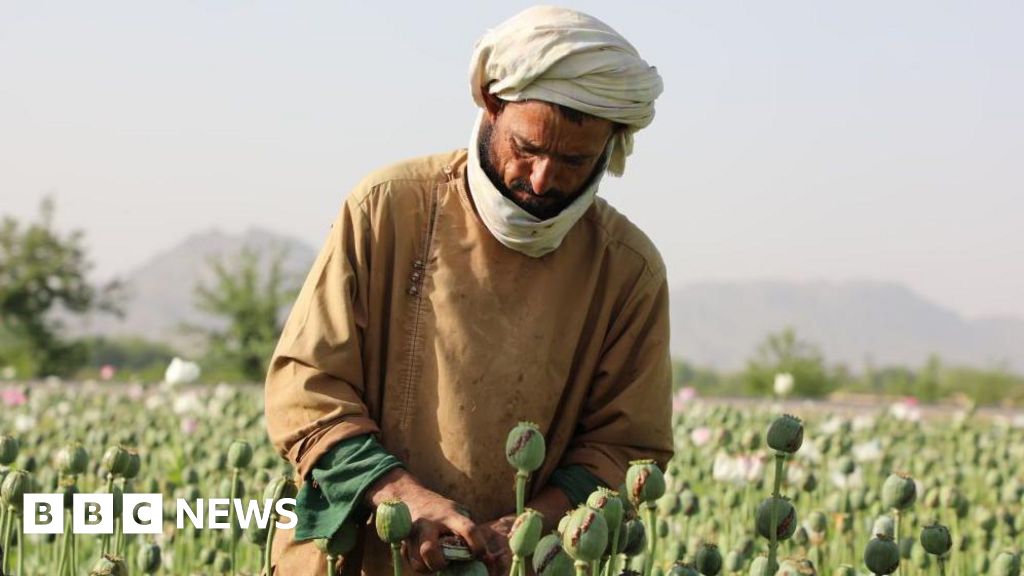Organic Personal Care Market Leads Green Revolution Amid Rising – openPR.com

Global Organic Personal Care Market: A Report on Growth and Sustainability Alignment
The global personal care sector is undergoing a significant transformation, shifting from synthetic-based products to natural and sustainable alternatives. The Organic Personal Care Market is at the vanguard of this movement, demonstrating substantial growth and a strong alignment with global sustainability objectives. This report outlines the market’s projected trajectory, its key drivers, and its intrinsic connection to the United Nations Sustainable Development Goals (SDGs).
Market Valuation and Growth Forecast
The global organic personal care market is projected to reach a valuation of USD 34.2 billion in 2025. The market is forecast to expand at a Compound Annual Growth Rate (CAGR) of 8.4% from 2025 to 2035, culminating in an estimated market value of USD 76.4 billion by 2035.
Alignment with United Nations Sustainable Development Goals (SDGs)
The expansion of the organic personal care market is a direct contributor to several key SDGs, reflecting a consumer-driven push for a more equitable and sustainable global economy.
SDG 3: Good Health and Well-being
The market’s fundamental premise is the exclusion of potentially harmful synthetic chemicals such as parabens, sulfates, and phthalates. This focus on non-toxic, natural ingredients directly supports public health by reducing consumer exposure to chemical irritants and potential long-term health risks.
SDG 12: Responsible Consumption and Production
This market is a clear manifestation of SDG 12 in action. The core drivers and product characteristics promote sustainable patterns of consumption and production through:
- Sustainable Sourcing: Emphasis on raw materials cultivated through organic farming methods.
- Reduced Chemical Waste: Formulations that biodegrade and minimize chemical pollution during manufacturing and post-consumer use.
- Eco-Friendly Packaging: A growing industry trend towards biodegradable, recyclable, and minimal packaging.
- Ethical Practices: Widespread adoption of cruelty-free testing standards.
SDG 14 & 15: Life Below Water and Life on Land
The industry’s reliance on organic agriculture helps protect terrestrial ecosystems (SDG 15) by eliminating synthetic pesticides and fertilizers. Consequently, this reduces chemical runoff into waterways, safeguarding aquatic ecosystems from pollution (SDG 14).
SDG 8: Decent Work and Economic Growth
The market’s robust 8.4% CAGR contributes to sustained economic growth. Furthermore, the demand for ethically sourced, organic ingredients can foster decent work and economic opportunities for agricultural communities globally.
Primary Market Drivers
- Heightened Health Consciousness: Consumers are increasingly informed about product ingredients, actively avoiding synthetic additives in favor of natural alternatives.
- Sustainability and Ethical Values: Purchasing decisions are heavily influenced by environmental factors, including sustainable ingredient sourcing, biodegradable packaging, and cruelty-free certifications.
- Advances in Green Chemistry: Innovations in botanical extracts and natural preservatives have improved the efficacy, texture, and shelf-life of organic products, making them competitive with synthetic counterparts.
- Supportive Regulatory Environment: Global regulatory bodies and certification standards (e.g., ECOCERT, COSMOS, USDA Organic) are enhancing market transparency and consumer trust.
Market Segmentation Analysis
By Product Category
- Skincare: The largest market segment, with high demand for organic anti-aging, moisturizing, and sun protection products.
- Haircare: A rapidly expanding segment driven by consumer demand for sulfate-free shampoos, conditioners, and treatments.
- Oral Care: An emerging category with growing traction for organic toothpaste and mouthwash.
- Cosmetics: A developing segment focused on incorporating organic ingredients into color cosmetics.
By Distribution Channel
- Hypermarkets/Supermarkets
- Pharmacy and Drug Stores
- E-commerce
- Other Channels
Regional Market Performance and Projections (CAGR 2025-2035)
The market demonstrates strong growth potential across various regions, led by rising disposable incomes and a cultural shift towards sustainable living.
- United States: 10.6%
- China: 10.2%
- South Korea: 9.7%
- United Kingdom: 9.2%
- Australia and New Zealand: 9.0%
- France: 8.8%
- Japan: 8.6%
- Germany: 8.5%
- Italy: 8.2%
Profile of Key Market Competitors
- Aveda Corporation
- Burt’s Bees
- The Estée Lauder Companies Inc.
- The Hain Celestial Group
- Amway Corporation
- Bare Escentuals Beauty, Inc.
- Arbonne International LLC
- Neutrogena Corporation
- The Body Shop International PLC
- Yves Rocher SA
1. Which SDGs are addressed or connected to the issues highlighted in the article?
-
SDG 3: Good Health and Well-being
- The article highlights a shift away from synthetic products “laden with chemical additives” and toxins like “parabens, sulfates, phthalates, and synthetic fragrances.” This directly connects to promoting good health by reducing exposure to harmful substances.
-
SDG 8: Decent Work and Economic Growth
- The article details the significant economic growth of the organic personal care market, projecting it to grow from “USD 34.2 billion” in 2025 to “USD 76.4 billion” by 2035 at a “CAGR of 8.4%.” This represents sustainable economic growth driven by innovation and changing consumer demands.
-
SDG 9: Industry, Innovation, and Infrastructure
- The text discusses industrial transformation through “Advances in Organic Formulation,” “innovations in botanical extracts, natural preservatives, and green chemistry.” This points to the development of sustainable and clean technologies within the personal care industry.
-
SDG 12: Responsible Consumption and Production
- This is a central theme of the article. It describes a “paradigm shift” towards sustainable consumption, fueled by consumer demand for “natural, sustainable, and eco-friendly alternatives.” It also mentions key production aspects like “cruelty-free testing, biodegradable packaging, and sustainable sourcing.”
2. What specific targets under those SDGs can be identified based on the article’s content?
-
SDG 3: Good Health and Well-being
- Target 3.9: By 2030, substantially reduce the number of deaths and illnesses from hazardous chemicals and air, water and soil pollution and contamination.
- The article’s focus on consumer avoidance of “toxins such as parabens, sulfates, phthalates, and synthetic fragrances” directly aligns with reducing illness from hazardous chemicals in consumer products.
- Target 3.9: By 2030, substantially reduce the number of deaths and illnesses from hazardous chemicals and air, water and soil pollution and contamination.
-
SDG 8: Decent Work and Economic Growth
- Target 8.2: Achieve higher levels of economic productivity through diversification, technological upgrading and innovation, including through a focus on high-value added and labour-intensive sectors.
- The market’s growth is driven by “Advances in Organic Formulation” and “innovations in green chemistry,” reflecting technological upgrading and a shift towards a high-value-added sector within the personal care industry.
- Target 8.2: Achieve higher levels of economic productivity through diversification, technological upgrading and innovation, including through a focus on high-value added and labour-intensive sectors.
-
SDG 9: Industry, Innovation, and Infrastructure
- Target 9.4: By 2030, upgrade infrastructure and retrofit industries to make them sustainable, with increased resource-use efficiency and greater adoption of clean and environmentally sound technologies and industrial processes.
- The industry’s adoption of “green chemistry” and development of products with “sustainable sourcing” represents a move towards cleaner, more sustainable industrial processes.
- Target 9.4: By 2030, upgrade infrastructure and retrofit industries to make them sustainable, with increased resource-use efficiency and greater adoption of clean and environmentally sound technologies and industrial processes.
-
SDG 12: Responsible Consumption and Production
- Target 12.2: By 2030, achieve the sustainable management and efficient use of natural resources.
- The emphasis on “sustainable sourcing” and the use of “botanical extracts” points directly to the sustainable management of natural resources in product formulation.
- Target 12.4: By 2020, achieve the environmentally sound management of chemicals and all wastes throughout their life cycle… and significantly reduce their release to air, water and soil in order to minimize their adverse impacts on human health and the environment.
- The shift away from “synthetic products, often laden with chemical additives” and specific “toxins” is a direct effort to achieve the environmentally sound management of chemicals in the beauty industry.
- Target 12.5: By 2030, substantially reduce waste generation through prevention, reduction, recycling and reuse.
- The mention of “biodegradable packaging” as a key feature of organic personal care products directly addresses the goal of reducing waste generation.
- Target 12.8: By 2030, ensure that people everywhere have the relevant information and awareness for sustainable development and lifestyles in harmony with nature.
- The article explicitly states that “rising consumer awareness about harmful chemicals” and a “global cultural shift towards sustainable living” are primary drivers of the market’s growth, indicating progress towards this target.
- Target 12.2: By 2030, achieve the sustainable management and efficient use of natural resources.
3. Are there any indicators mentioned or implied in the article that can be used to measure progress towards the identified targets?
-
For Target 3.9 (Reduce illness from chemicals):
- Implied Indicator: The market share of products free from “parabens, sulfates, phthalates, and synthetic fragrances.” A decrease in the market share of products containing these chemicals indicates progress.
-
For Target 8.2 (Economic productivity and innovation):
- Mentioned Indicator: The “Compound Annual Growth Rate (CAGR) of 8.4%” and the projected market valuation increase to “USD 76.4 billion” serve as direct economic indicators of the sector’s productivity and growth.
- Implied Indicator: The rate of adoption of “green chemistry” and “innovations in botanical extracts” by companies in the personal care sector.
-
For Target 9.4 (Sustainable industries and clean technologies):
- Implied Indicator: The number of personal care products and companies achieving certifications like “USDA Organic, COSMOS, and ECOCERT,” which validate the use of sustainable processes.
-
For Target 12.2 (Sustainable management of natural resources):
- Implied Indicator: The volume or percentage of raw materials in the industry that are certified as being from “sustainable sourcing.”
-
For Target 12.5 (Reduce waste generation):
- Implied Indicator: The percentage of personal care products sold in “biodegradable packaging.”
-
For Target 12.8 (Information and awareness for sustainable lifestyles):
- Mentioned Indicator: The article directly identifies “rising consumer awareness” and “health consciousness” as key market drivers, which can be measured through consumer surveys and market analysis. The high growth rates in various regions (e.g., “United States: CAGR of 10.6%”, “China: expanding at a 10.2% CAGR”) are presented as a direct result of this increased awareness.
4. Table of SDGs, Targets, and Indicators
| SDGs | Targets | Indicators |
|---|---|---|
| SDG 3: Good Health and Well-being | 3.9: Substantially reduce illnesses from hazardous chemicals. | Implied: Market share of products free from “parabens, sulfates, phthalates.” |
| SDG 8: Decent Work and Economic Growth | 8.2: Achieve higher levels of economic productivity through innovation. | Mentioned: Market “Compound Annual Growth Rate (CAGR) of 8.4%” and projected value of “USD 76.4 billion.” |
| SDG 9: Industry, Innovation, and Infrastructure | 9.4: Upgrade industries to make them sustainable and adopt clean technologies. | Implied: Adoption rate of “green chemistry” and number of products with certifications like “USDA Organic, COSMOS, and ECOCERT.” |
| SDG 12: Responsible Consumption and Production | 12.2: Achieve sustainable management and efficient use of natural resources. | Implied: Percentage of industry materials from “sustainable sourcing.” |
| 12.4: Achieve environmentally sound management of chemicals. | Implied: Reduction in the use of “chemical additives” and “toxins” in personal care products. | |
| 12.5: Substantially reduce waste generation. | Implied: Market share of products using “biodegradable packaging.” | |
| 12.8: Ensure people have information and awareness for sustainable development. | Mentioned: “Rising consumer awareness” and “global cultural shift towards sustainable living” cited as key market drivers. |
Source: openpr.com

What is Your Reaction?
 Like
0
Like
0
 Dislike
0
Dislike
0
 Love
0
Love
0
 Funny
0
Funny
0
 Angry
0
Angry
0
 Sad
0
Sad
0
 Wow
0
Wow
0













![Architects use comics and humour to rethink sustainable cities [Interview] – Mongabay-India](https://imgs.mongabay.com/wp-content/uploads/sites/30/2025/11/06135611/1761635108000-768x511.jpeg?#)

































































